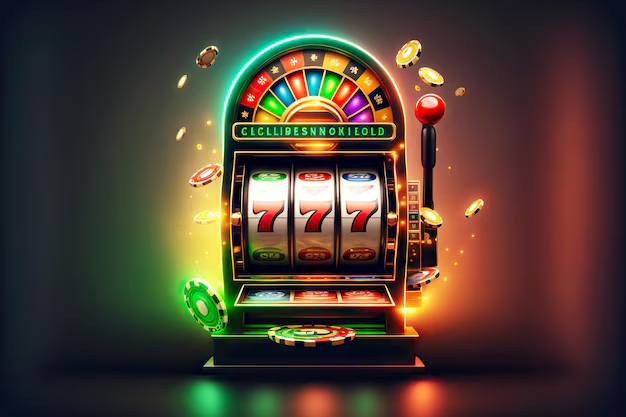In recent years, the world of online gambling has seen a massive boom, with slot games being one of the most popular forms of entertainment. With their vibrant graphics, exciting sound effects, and promises of big rewards, slot machines are designed to attract and retain players. But beyond the flashing lights and spinning reels lies a sophisticated psychological strategy aimed at influencing player behavior. These games are not just the product of chance—they are carefully engineered to keep users engaged, playing longer, and spending more. If you’ve ever found yourself spinning just one more time, you’ve experienced firsthand the psychological pull of these games. A visit to an Online Casino reveals just how advanced and enticing these designs have become.
Let’s delve into the subtle and sometimes surprising psychological principles that guide the design of modern slot games.
- The Power of Visual and Auditory Stimulation
Slot games are a sensory explosion. Bright colors, smooth animations, and themed graphics instantly capture attention. Every part of the game, from the spinning reels to the celebratory animations that follow a win, is designed to heighten emotional response.
- Colors and Lights: Designers use color psychology to create a stimulating environment. Red can induce excitement, blue promotes trust, and gold is associated with wealth and luxury. Flashing lights and animations trigger a dopamine response in the brain, reinforcing behavior through reward anticipation.
- Sound Design: Sound plays a crucial role in how slot machines make players feel. Winning sounds, even from small payouts, can trick the brain into perceiving a successful outcome. The iconic “ding-ding-ding” of a slot machine isn’t just nostalgic—it’s a cue of pleasure and progress.
- Variable Reward Schedules: The Psychology of Uncertainty
One of the most powerful psychological tricks used in slot game design is the variable ratio reinforcement schedule—a reward system that gives out prizes unpredictably. This is the same reward system that drives behavior in gambling, social media, and even animal training.
In slot games, players don’t win every time. But they win often enough—and unpredictably enough—to keep them engaged. The human brain is wired to respond to uncertainty. It’s the “maybe next time” that makes players want to keep spinning.
This intermittent reward system is similar to how dopamine is released in the brain when a reward is expected but not guaranteed. The brain becomes conditioned to associate the slot machine with potential pleasure, reinforcing the urge to play.
- The Illusion of Control
Slot machines are games of chance, but many are designed to give players the illusion of control. Some allow users to stop the reels, choose the number of paylines, or activate bonus rounds. These actions make the player feel involved, as if their choices influence the outcome.
However, these features are often just cosmetic. The results are determined by a Random Number Generator (RNG), and no action by the player can change that. But the illusion of agency keeps players engaged, as they feel they are actively participating in the game, not just watching it unfold.
- Losses Disguised as Wins (LDWs)
A common trick in slot design is losses disguised as wins. These occur when a player wins back less than they originally wagered, but the game still celebrates as if it were a win—complete with sounds, animations, and flashing lights.
For example, if you bet $1 and win $0.40, the machine may react as though you’ve won big. Psychologically, this triggers a reward response, even though the player has actually lost money. Over time, this distorts the player’s perception of their overall success and loss, encouraging continued play.
- Near Misses and the Chase for Victory
Near misses are another psychological tactic used to prolong play. These occur when the symbols on the reels almost result in a win—perhaps two matching symbols are on the screen, and the third just misses aligning.
Even though a near miss is technically a loss, the brain interprets it as a sign of imminent success. Studies show that near misses activate the same brain areas associated with actual wins, increasing motivation to continue playing. This is similar to how slot games create a sense of “just one more spin” being the key to a big win.
- Personalization and Game Themes
Modern slot games come with a wide range of themes—ranging from ancient Egypt to outer space, fairy tales to TV shows. This personalization is more than just aesthetic. It creates an emotional connection between the player and the game.
By tailoring games to suit different demographics and interests, designers ensure broader appeal. Some games even include elements of progression or storytelling, giving players a reason to return—not just for monetary gain, but to see what happens next.
In addition, slot games now often include features like achievements, unlockable bonuses, and loyalty programs. These elements borrow heavily from video game psychology and increase the feeling of progress and reward, even without monetary wins.
- The “Sticky” Effect of Bonuses and Free Spins
Bonus rounds and free spins are some of the most enticing elements of slot games. These features offer players a break from the standard spinning reels and provide a sense of novelty and anticipation.
Psychologically, bonuses exploit the concept of “sunk cost”—the idea that once you’ve invested time or money into something, you’re more likely to continue doing so. Players who are close to unlocking a bonus may continue playing, even if they otherwise would have stopped.
Moreover, when players receive free spins, they’re more likely to stay engaged, especially if they result in small rewards that keep the dopamine flowing. These intermittent boosts reinforce positive behavior and can turn casual players into habitual ones.
- Time on Device (TOD) Maximization
Slot game designers also aim to maximize Time on Device (TOD)—the total time a player spends interacting with a game. The longer someone plays, the more likely they are to spend money. Designers achieve this through various methods:
- Smooth transitions between games or spins.
- Minimal downtime or loading screens.
- Auto-play features that eliminate breaks between rounds.
- Visual countdowns and timers to keep attention focused.
By reducing friction and making gameplay continuous, players are less likely to pause and reflect on their losses or behavior.
- Social Proof and Community Influence
Many online slot platforms now incorporate social elements such as leaderboards, chat rooms, and even multiplayer slots. These features create a sense of community and social validation.
Seeing others win or progress reinforces the belief that winning is possible, triggering FOMO (Fear of Missing Out). This psychological principle can drive players to spend more time and money in hopes of achieving similar success.
- Monetization and Microtransactions
Slot games—especially those that are free-to-play—often generate revenue through in-app purchases. Players can buy coins, tokens, or extra spins, often at low price points that seem insignificant individually but add up over time.
These microtransactions are designed to feel painless. Often, players are encouraged to make a small purchase with a big reward upfront, creating a sense of value. Once a player has spent money once, they are psychologically more likely to spend again.
The presence of sales, time-limited offers, or countdowns further encourages impulsive decisions and spending.
- Gambler’s Fallacy and Cognitive Biases
Slot games take advantage of several cognitive biases, including:
- Gambler’s Fallacy: The belief that a win is “due” after a series of losses.
- Hot Hand Fallacy: The belief that winning streaks will continue.
- Confirmation Bias: Remembering wins more vividly than losses.
These mental shortcuts can distort judgment and keep players engaged even in the face of consistent losses.
- Responsible Gaming: A Double-Edged Sword
Some platforms include responsible gaming tools like loss limits, self-exclusion options, or spending trackers. While these are meant to promote healthy gambling behaviors, critics argue that they can be more of a legal shield than an effective deterrent.
That said, the psychology behind slot design is ethically ambiguous. On one hand, these games are a form of entertainment. On the other, they are built with mechanisms known to encourage addictive behavior. As a result, the balance between fun and exploitation is a topic of ongoing debate.
Conclusion
Slot games are more than just simple gambling machines. They are carefully crafted psychological experiences, engineered to manipulate the brain’s reward system, exploit cognitive biases, and encourage prolonged engagement. From visual design and sound effects to reward systems and personalized themes, every element is designed with the player’s mind in focus.















Leave a comment